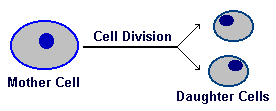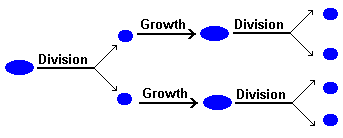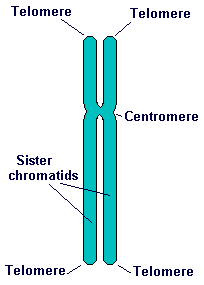
|
Student's Study Guide for Lesson One
by Dr Jamie Love |

|
 and
and  licensed under a Creative Commons Attribution-ShareAlike 4.0 International License.
licensed under a Creative Commons Attribution-ShareAlike 4.0 International License.

|
Student's Study Guide for Lesson One
by Dr Jamie Love |

|
The instructions to build a cell are coded as genetic information or _______.
|
Cell division in a cell's way of reproducing.
__________ - single cell __________ - many cells (many specialized) Some multicellulars reproduce by "_________" |

|
Most multicellulars reproduce using special reproductive cells called _________ (sperm or egg cells).
A ______is a single cell created by the union of a sperm cell and an egg cell.
A zygote undergoes a cell division to create two cells. These undergo further cell divisions and eventually give rise to the _____cellular organism.
1 -> 2 -> 4 -> 8 -> 16 -> 32 -> 64
lots more cell divisions 100 trillion (1014) cells = baby
(What would happen if there was one extra cell division before birth?)
[___________________________ ]
If genetic information is lost or corrupted all descendents (of that cell) will _______ the errors. These genetic errors are called mutations. Some cell mutations occurring after the zygote stage (cancers) while others are inherited from the parents' mutant gametes (cystic fibrosis, Downs syndrome).
(What would happen if cells only divided without growing in size between divisions?)
[_________________________________________________]
| The growth phase is an important part of a cell "cycle" because if there were no cell growth between divisions the cells would divide and divide, becoming smaller with each division, until they disappeared! |

|
Genetic structure (genes) are coded by ____.
Organized structures of these genes are called _____________.
Bacteria (and viruses) - just DNA. ("naked ______________")
All other organisms - DNA and ________.
Eukaryotes = chromosomes in a _________.
Prokaryotes = do not have a _______.
PROKARYOTES

|
Eukaryotes are more complicated in how they package, store and
distribute their chromosomes.
Eukaryotic chromosomes are linear (lengths of ds)
Chromosomes are only visible during _________ division. During division, chromosomes are wound up ("_________") Between division - chromosomes are unwound ("_________") | EUKARYOTES

|
Know - teleomere, centromere, chromatids, sister chromatids.
Cell division in eukaryotes is complicated because they have:
Mitosis and meiosis refer to the division of the __________ and this is only a part of cell division. M&M increase the number of nuclei, NOT the number of cells.
Mitosis produces __________ nuclei,
is the __________ type of nuclear division
and its purpose is to ___________ the number of nuclei.
Mitosis is also used in asexual reproduction - reproduction without mixing _______. (Vegetative propagation, cloning, etc.)
Meiosis produces _______ nuclei,
is a very ___________ type of nuclear division occurring only
in cells that will become ______ (sex cells - sperm and egg)
and its purpose is _____ reproduction - reproduction involving
the fusion of gametes.
A clear understanding of meiosis is essential in order to understand genetics - the study of _______.